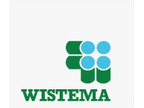- europages
- >
- COMPANIES - SUPPLIERS - SERVICE PROVIDERS
- >
- acetic acid
Results for
Acetic acid - Import export

SUN CHEMICAL - COLORS & EFFECTS NETHERLANDS B.V
Netherlands
Acetic Acid is an organic compound. It is classified as a carboxylic acid and is the second simplest carboxylic acid. It is a very useful chemical compound that is produced synthetically as well as by bacterial fermentation. Synthetically it is made by the carbonylation of methanol. Its chemical formula is C2H4O2.
Request for a quote
LINDEBOOM HOLDING B.V
Netherlands
Are you in search of top-notch acetic acid for your industrial or household needs? Look no further! Our comprehensive guide will walk you through everything you need to know about acetic acid, its diverse applications, and why choosing the right supplier is crucial. Section 1: Understanding Acetic Acid Acetic acid, also known as ethanoic acid, is a vital chemical compound with a wide range of applications. Its chemical formula, CH3COOH, reveals its simple yet powerful composition. Acetic acid is commonly recognized for its pungent odor and sour taste, resembling that of vinegar. However, it’s essential to note that industrial-grade acetic acid serves various purposes far beyond culinary use. Section 2: Applications of Buy Acetic Acid Products Online Glacial 2.1. Food Industry: Acetic acid is a common food preservative and flavor enhancer. It’s used in the production of condiments, pickles, and salad dressings. 2.2. Chemical Manufacturing
Request for a quote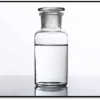
OEN CHEMICALS GMBH
Austria
Acetic Acid is an organic compound. It is classified as a carboxylic acid and is the second simplest carboxylic acid. It is a very useful chemical compound that is produced synthetically as well as by bacterial fermentation. Synthetically it is made by the carbonylation of methanol. Its chemical formula is C2H4O2. Chemical Appearance Acetic Acid has the appearance of a clear and colourless liquid. It has a strong vinegar like odour. It is miscible in water. It corrodes metals and tissue. It is slightly heavier than water. Chemical Applications and Strengths Acetic Acid or Ethanoic Acid is a very useful chemical substance and hence, has many industrial applications. Its major applications and strengths are:
Request for a quote
JADAM
Portugal
Acetic Acid 50%, 80% and 99% systematically named ethanoic acid, is an acidic, colourless liquid, organic compound with the chemical formula (CH3COOH) Vinegar is at least 4% acetic acid by volume, making acetic acid the main component of vinegar apart from water and trace elements It is an important chemical reagent, used primarily in the production of cellulose acetate for photographic film, polyvinyl acetate for wood glue, and synthetic fibres and fabrics In households, diluted acetic acid is often used in descaling agents In the food industry, it used as an acidity regulator and as a condiment Industries: Household chemicals, Fertilizers Properties: CAS number 64-19-7 WE number 200-580-7 Chemical formula CH3COOH Molar mass 60,05 g/mol Customs tariff code 29152100 ADR UN2789 pH <1 Melting / freezing point -20°C (1013 hPa) Boiling point range 92°C (1013hPa) Relative density 1,057 g/cm3 @25°C Solubility in water 602,9 g/l/ @25°C
Request for a quote
W. ULRICH GMBH
Germany
is a clear, corrosive, flammable liquid with sour taste and scent. It is manufactured by fermentation of ethanol or carbonylation of methanol or oxidation of acethaldehyde. Mixed with water it is termed as vinegar for household applications. The acetic acid is in Europe and Asia for many centuries now used as seasoning. The discovery of it is estimated at 5000 BC. In nature the acetic acid can be found in saps or essential oils.
Request for a quote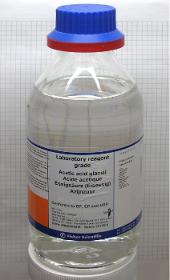
J.D.F. IMPORT-EXPORT GMBH
Germany
Acetic Acid is a colourless liquid organic compound with the chemical formula CH3COOH. It is also called glacial acetic acid when undiluted. Acetic acid is the main component of vinegar, and has a distinctive sour taste and pungent smell. In food preparation, Acetic Acid can be used as a flavouring and as a food preservative. The acid inhibits bacterial growth, keeping food safe from contamination. Industrially, acetic acid is used in a wide range of processes, including as a weak acid, a solvent, a reagent, a catalyst, and a pesticide, and can be used in the preparation of paints, varnishes and glazes.
Request for a quote
AGRAR KO
North Macedonia
Market leader for vinegar in the region with closed production cycle, including in-house production of the vinegar's plastic packaging. Discover our range of vinegar flavors and become more creative with your salads.
Request for a quote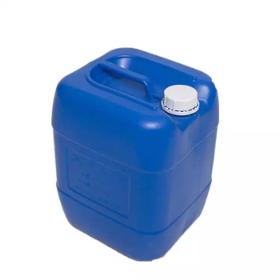
QUAY CHEMICALS B.V
United Kingdom
Products Description It is clear liquid, free from suspended matter and with pungent odor. It can be dissolved in water, ethanol, glycerol, and ethyl ether, but not in carbon disulfide. Density: 1.04928 Melting Point: 16.665 Boiling Point: 117.9C Viscosity: 1.22 Flash Point: 43C Refraction Index: 1.3715 Firing Point: 465C Explosion Rate: 4%-16%. Application widely used for preparation of vinegar anhydride, vinyl acetate, acetic ester, metal acetic acid salt, chloroacetic acid, cellulose acetate, etc., used in the production of ethyl acetate, edible spices, wine with spices used as analytical reagent, such as solvent and soaker.
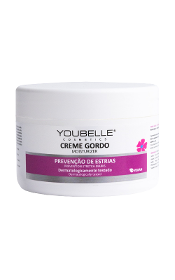
FOURMAG
Portugal
It is a greasy body cream designed to prevent and reduce stretch marks during and after pregnancy. Enriched with sweet almond oil, lanolin, glycerin and beeswax, ingredients that help hydrate, smooth and improve skin elasticity. Dermatologically tested, with sweet almond oil, Deep hydration, Indicated during and after pregnancy. Paraffinum liquidum, Aqua, Cera alba, Lanolin, Prunus amygdalus dulcis oil, Magnesium stearate, Zinc oxide, Glyceryl stearate, Sodium cetearyl sulfate, PEG-40 hydrogenated castor oil, Phenoxyethanol, Decylene glycol, Caprylyl glycol, Tocopheryl acetate, Citric acid, Parfum.
Request for a quote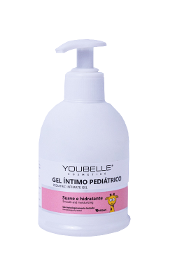
FOURMAG
Portugal
Intimate gel specially indicated for daily pediatric intimate hygiene. With prebiotic and lactic acid to maintain a healthy vaginal flora. Dermatologically tested, Hypoallergenic, with Prebiotic, vitamin E and lactic acid, Vegan. Aqua, Magnesium laureth sulfate, Disodium laureth sulfosuccinate, Peg-150 distearate, Peg-7 glyceryl cocoate, Decyl glucoside, Laureth-9, Alpha-glucan oligosaccharide, Phenoxyethanol, Decylene glycol, Caprylyl glycol, Bisabolol, Tocopheryl acetate, Lactic acid, Parfum.
Request for a quote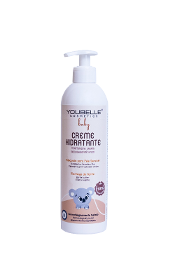
FOURMAG
Portugal
Vegan / Recommended from birth Sensitive skin - Hypoallergenic - Shea Butter Baby moisturizing cream, easily absorbed, providing good hydration. Use daily. Apply the cream, massaging gently into the skin until completely absorbed. Keep out of the reach of children. Do not ingest. In case of contact with eyes, wash immediately and thoroughly with water.. Aqua , Glycerin, Isopropyl myristate, Glyceryl stearate, Butyrospermum parkii butter, Hydrogenated coco-glycerides, Octyldodecanol, Glyceryl stearate, peg-100 stearate, Pentylene glycol, caprylyl glycol, Cetyl alcohol, 1,2-hexanediol, Sodium cetearyl sulfate, Acrylates/C10-30 alkyl acrylate crosspolymer, Glyceryl caprylate, Aloe Barbadensis Leaf Juice, Potassium Sorbate, Sodium Benzoate, Parfum, Calendula officinalis flower extract, Potassium sorbate, sodium benzoate, citric acid, Tocopheryl acetate, Sodium hydroxide.
Request for a quote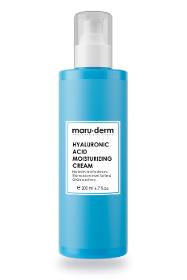
MARUDERM BEAUTY AND COSMETICS
Turkey
Fragrance, Paraben, Sles and SLS Free. Intensely moisturizes the skin with hyaluronic acid. Protects against signs of aging. It gives a smooth, soft and lively appearance. Suitable for face and body. Usage/Warnings: Apply to clean skin morning and evening by massaging. For external use. Avoid direct contact with eyes. In case of contact, wash with plenty of water. Keep out of reach of children. Ingredients: Aqua, Glycerin, Niacinamide, Solidago Virgaurea Extract, Butyrospermum Parkii Butter, Panthenol, Allantoin, Sodium Hyaluronate, Caprylic/Capric Triglyceride, Stearic Acid, Tocopherol Acetate, Ethylhexylglycerin, Potassium Cetyl Phosphate, Phenoxyethanol, Sodium Lactate, Sodium PCA, Glycine, Fructose, Urea, Inositol, Sodium Benzoate, Lactic Acid, Cetyl Stearate, Tridecyl Salicylate, Carbomer, Dimethicone.
Request for a quote
MARUDERM BEAUTY AND COSMETICS
Turkey
Its unique formula enriched with Hyaluronic Acid and Peptides provides the skin with the moisture it needs and gives it a soft and smooth appearance. Helps reduce the appearance of wrinkles. The skin becomes smoother, more vibrant, and radiant. How to Use/Warnings: Apply morning and evening to your skin after cleansing by massaging upwards for external use. Do not use it on irritated skin. Avoid direct contact with eyes; in case of contact, rinse with plenty of water. Keep out of reach of children. Ingredients: Aqua, Glycerin, Niacinamide, Butyrospermum Parkii Butter, Solidago Virgaurea Extract, Sodium Hyaluronate, Panthenol, Copper Palmitoyl Heptapeptide-14, Heptapeptide-15 Palmitate, Allantoin, Sodium Hydroxide, Glycine, Fructose, Urea, Inositol, Sodium Lactate, Potassium Cetyl Phosphate, Sodium PCA, Caprylic/Capric Triglyceride, Sodium Benzoate, Carbomer, Tridecyl Salicylate, Dimethicone, Lactic Acid, Tocopherol Acetate, Xanthan Gum, Polivinyl Alcohol, Lactic Acid
Request for a quote
SUN CHEMICAL - COLORS & EFFECTS NETHERLANDS B.V
Netherlands
EDTA Tetrasodium is a very useful salt which is made as a result of neutralisation of ethylenediamine tetra acetic acid with four equivalents of sodium hydroxide. It has the chemical formula C10H12N2Na4O8.
Request for a quote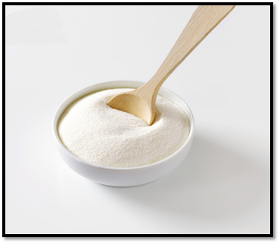
SUN CHEMICAL - COLORS & EFFECTS NETHERLANDS B.V
Netherlands
Zinc Acetate is an organic compound which is categorised as an acetate salt in which zinc is the cationic element. It exists in both anhydrous and dihydrate forms. It is a very useful chemical material that is industrially produced by acetic acid’s action on zinc carbonate or zinc metal and it’s chemical formula is C4H6O4Zn.
Request for a quote
SUN CHEMICAL - COLORS & EFFECTS NETHERLANDS B.V
Netherlands
Isopropyl Alcohol or Ethanol is a chemical which has a wide range of uses. This includes the use in the manufacturing of various products like beverages, flavorings, acetic acid, fuels, and dyes. Its other uses can be determined depending on its concentration. In the medical field, Isopropyl Alcohol with a concentration between 70% to 75% is used for disinfecting purposes. Common rubbing alcohols which are used in hospitals and households are of this concentration.
Request for a quoteDo you sell or make similar products?
Sign up to europages and have your products listed
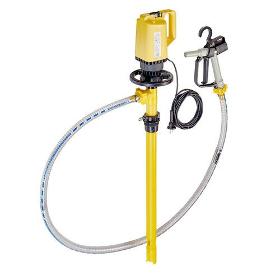
LUTZ PUMPEN GMBH
Germany
The pump set is suitable for corrosive, aqueous to slightly viscous media. Perfectly suited for the removal or decanting of alkaline solutions. * Media examples: Sodium hydroxide, potassium hydroxide, ammonia water, formic acid and acetic acid etc. acetic acid etc. * Pump unit equipped with Lutz original handwheel * Suitable for filling or decanting oils such as rapeseed oil and vegetable oil Features & benefits * Optionally with electric or compressed air drive * No lubricants and therefore no contamination of the pumped medium by lubricants lubricants * Optimised drum emptying * Universally resistant PTFE shaft bearing * Maintenance without special tools * Sealing modules of the sealless (DL) pump can be replaced The value of the maximum flow rate is determined on the basis of fixed parameters and always under the same conditions. These can be found on our website.
Request for a quote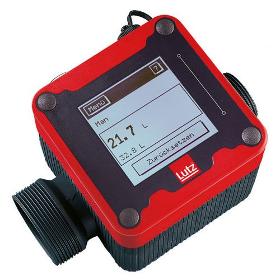
LUTZ PUMPEN GMBH
Germany
The first flowmeter with touch screen display and backlighting convinces with its simple, demand-oriented display and operability, the multilingual interface and the compact design: The rotating swash plate and a magnet enable the exact measurement of the flow rate and measures solvents, acids, alkalis, highly inflammable liquids, oils and neutral media precisely, quickly and above all efficiently. Optionally, the desired quantity can be preselected with the quantity preselection (relay module), so that the pump or the system switches off automatically after the selected quantity. This further simplifies and secures the operation of the systems. * Optional with volume preselection (relay module) * Media examples: Methanol, petrol, isopropanol, kerosene, formic acid, acetic acid, acetone, styrene, xylene, toluene, etc. * Mobile on a Drum pump or with a nozzle connection or stationary in plant engineering
Request for a quote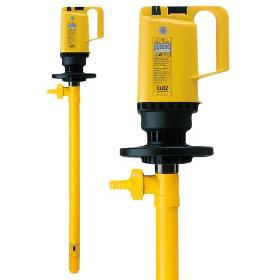
LUTZ PUMPEN GMBH
Germany
Drum pump is suitable for corrosive, aqueous to slightly viscous media. Perfectly suited for the withdrawal or decanting of caustic solutions. * Media examples: Sodium hydroxide, potassium hydroxide, ammonia water, formic acid and acetic acid, etc. * Pumping unit equipped with Lutz Original handwheel * suitable for filling or transferring oils such as rapeseed oil and vegetable oil Features & Advantages * optionally with electric or compressed air drive * no lubricants and therefore no contamination of the pumped medium by lubricants * optimized barrel emptying * universally resistant PTFE shaft bearings * Maintenance without special tools * Seal modules of the seal-less (DL) pump can be replaced
Request for a quote
LUTZ PUMPEN GMBH
Germany
The first flowmeter with touch screen display and backlighting convinces with its simple, demand-oriented display and operability, the multilingual interface and the compact design: The rotating swash plate and a magnet enable the exact measurement of the flow rate and measures solvents, acids, alkalis, highly inflammable liquids, oils and neutral media precisely, quickly and above all efficiently. Optionally, the desired quantity can be preselected with the quantity preselection (relay module), so that the pump or the system switches off automatically after the selected quantity. This further simplifies and secures the operation of the systems. * Optional with volume preselection (relay module) * Media examples: Methanol, petrol, isopropanol, kerosene, formic acid, acetic acid, acetone, styrene, xylene, toluene, etc. * Mobile on a Drum pump or with a nozzle connection or stationary in plant engineering
Request for a quote
VESTA CHEMICALS BV
Netherlands
Catonium ETPAAC (Ethyltriphenylphosphonium Acetate) is a colourless to slightly yelow liquid, its chemical formula is C22H23O2P. ETPAAC is a quaternary phosphonium salt available in 70% by weight solution in methanol. One mole of acetic acid is bound to each mole of ETPAAC. The material is mainly used for the advancement and curing of phenolic based epoxy resins and as a phase transfer catalyst. Ethyltriphnylphosphonium Acetate also known as ETPAAC, ETPAACc and TEPA. Compared to amines, imidazoles and quaternary ammonium salts CatOnium ETPAAC features considerable better latency and thermal stability. Further it offers a low odor, minimal color formation and controlled reactivity. It decreases or eliminates side reactions and creates longer, straighter chain epoxy molecules which have a sharp molecular weight distribution. Shipment Info Europe and United States Provided CatOnium ETPAAC is on stock in our local warehouses our lead time is about one week if delivered
Request for a quote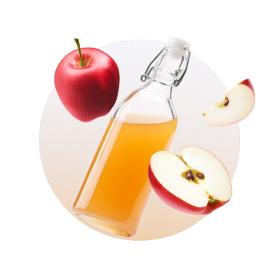
VEHGRO B.V
Germany
"Origin and history of apple cider vinegar Apple vinegar, also known as apple cider or apple cider vinegar, is a natural product (juice) made from fermented apples. It has been used for centuries as an effective preservative. More recently, apple cider vinegar has become popular because of its amazing health benefits Production Process, Harvest or Processing Apple Cider Vinegar The apples are milled creating a liquid that is mixed with yeast to start the process of alcoholic fermentation. The sugars are converted into alcohol. At the same time, acetic acid bacteria ensure that the created alcohol is converted into vinegar. In the final apple cider vinegar is thus no alcohol. Healthy properties Apple Cider Vinegar and applications Apple vinegar can be used in various ways, both internally and externally. It is besides a delicious addition to a salad or vegetable also good for the body. Apple cider vinegar can help to keep the skin supple and soft…"
Request for a quote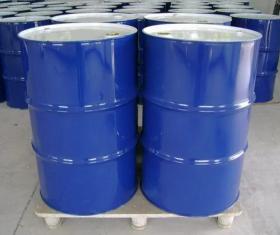
TEMAS GROUP EXPORT PARTNERS
Turkey
DIETHYLENE GLYCOL (DEG) ENERJISUN DEG Purity 99.8 % wt. min Color [Pt-co ] 5 max MEG 0.05 % wt. max TEG 0.05 % wt. max Water 0.05 % wt. max Acidity as Acetic Acid Max 50 ppm Ash Content Max 50 ppm Specific gravity (20/20 ◦C) 1.1175-1.1195 Color Pt-co 10 max Distillation@760 mmHg IBP 242 ◦C min DP 250 ◦C max Introduction Diethylene glycol (DEG) is an odorless, colorless, clear and viscose liquid with a sweet taste, which is produced from the reaction between water and ethylene oxide. In fact, it is the coproduct of ethylene glycol alongside with triethylene glycol (TEG). General Applications Diethylene glycol is used in the manufacture of unsaturated polyester resins, plasticizers and polyurethanes. It is also used as textile lubricant, solvent in textile dyeing and printing, humectant, selective solvent for aromatics in petroleum refining, plasticizer for paper, cork and synthetic sponges, raw material for the production of ester
Request for a quote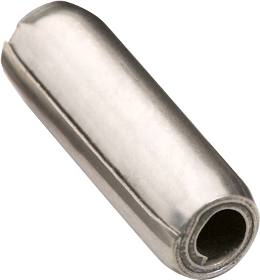
SPIROL
Germany
SPIROL manufactures Coiled Spring Pins out of 316 stainless steel to meet specific application requirements. Type 316 stainless steel is similar to 302/304 stainless steel with a slightly higher nickel content and the addition of molybdenum. The molybdenum content increases the chemical resistance of this alloy greatly. 316 exhibits superior pitting resistance against sea water, acetic acid vapors, chlorides, sodium and calcium brines, hypochlorite solutions, phosphoric acid, and the sulfite liquors and sulfurous acids used in the paper and pulp industry. This alloy is also austenitic, non-magnetic and non-hardenable using conventional methods. 316 stainless steel has better mechanical properties at elevated temperatures than 302/304 and offers excellent mechanical integrity at subzero temperatures. Typical applications for SPIROL's 316 Stainless Steel Coiled Pins include the following: marine, processing equipment, industrial, oil and gas and medical.
Request for a quote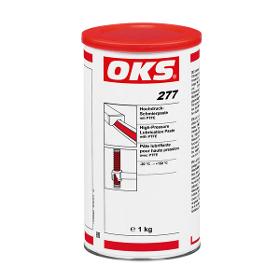
OKS SPEZIALSCHMIERSTOFFE GMBH
Germany
Lubricating and sealing off tap cocks, labyrinth seals, stuffing boxes and packings Lubricating and sealing off fittings made of metal, plastic and ceramic, e.g. drain, cold- and hot-water fittings Long-term lubrication of heavily loaded press and guide plates, for example on telescope booms of mobile cranes As a lubricant for of threaded spindles on radiator thermostats Advantages and benefits Reduces wear Extension of the relubrication intervals High resistance to oxidation Noise and vibration-damping Resistant to cold and hot water, water vapour, lactic, formic, acetic and fruit acid, as well as alkaline and acidic cleaning agents and disinfectants Good elastomer and plastic compatibility For optimum adhesion, clean contamination and other lubricants from slide surfaces. Best way is to clean mechanically first and then with OKS 2610/OKS 2611 universal cleaner. Apply sufficient paste evenly with a brush, spatula, etc. The paste will also act as a sealant.
Request for a quote
ANKARA BRONZ
Turkey
In open air, resistant to fresh and salty water, sulphuric, sulfurous, phosphoric and chromic acids. Affected by acetic formic and nitric acids.
Request for a quote
OEN CHEMICALS GMBH
Austria
EDTA Tetrasodium is a very useful salt which is made as a result of neutralisation of ethylenediamine tetra acetic acid with four equivalents of sodium hydroxide. It has the chemical formula C10H12N2Na4O8. Chemical Appearance ESTA Tetrasodium has the appearance of a white solid. It is highly soluble in water. Chemical Applications and Strengths EDTA Tetrasodium is an extremely efficient chemical compound and therefore, has many industrial applications. Its main applications and strengths are: EDTA Tetrasodium is most popularly used for making cosmetic additives. It is widely used in the production of dyeing auxiliaries.
Request for a quote
JUST DIFFERENT PEOPLE,S.L.
Spain
Calcium acetate is a calcium salt derived from acetic acid, notable for its white or crystalline powder appearance and its solubility in water. This compound is mainly used as an anticoagulant agent in the treatment of hyperphosphatemia, a common condition in patients with chronic kidney disease, as it helps reduce phosphate levels in the blood by forming insoluble compounds that are eliminated from the body. In addition, calcium acetate is used in the food industry as a stabilizer and preservative, as well as in the production of vinegar from acetic acid and as a precursor in the synthesis of other chemical products. Its versatility and effectiveness in various applications make calcium acetate a valuable compound in multiple fields, from medicine to the food industry.
Request for a quoteResults for
Acetic acid - Import exportNumber of results
77 ProductsCountries
Company type
Category
- Cosmetics (8)
- Chemicals - Basic Products & Derivatives (7)
- Generating units (5)
- Import-export - chemicals and pharmaceuticals (5)
- Chemical catalysts (4)
- Carboxylic and anhydric acids (3)
- Haircare products (3)
- Pharmaceuticals - basic and auxiliary products (3)
- Chemicals - import-export (2)
- Flow meters (2)
- Pumps (2)
- Shampoos (2)
- Skin-care products (2)
- Abrasives, chemical (1)
- Additives, food (1)
- Alcohols, phenols and derivatives (1)
- Aluminium and aluminium alloys (1)
- Anhydrides (1)
- Chemical metal treatment (1)
- Chemistry - laboratory products (1)
